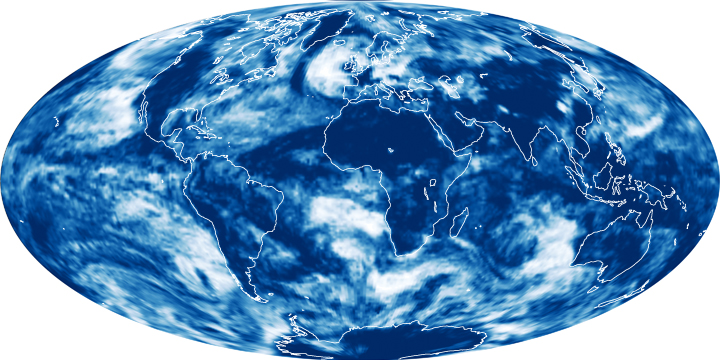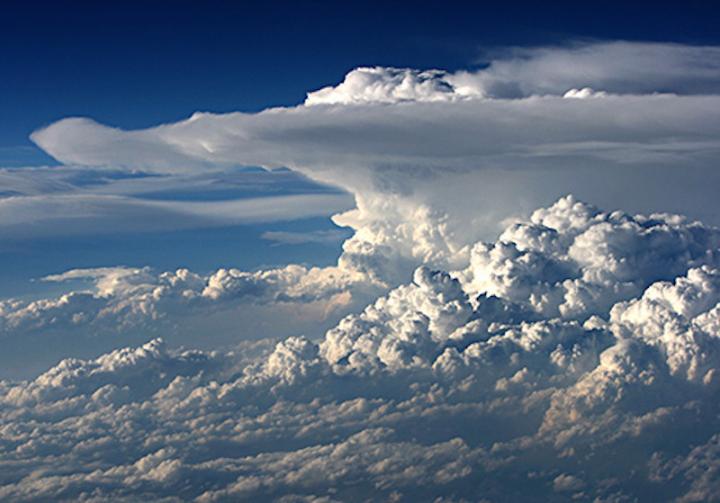Recent satellite data shows that clouds have been retreating toward the poles, and that they’re also growing higher. Find out what these changes mean for your cloud watching afternoons!
If you are a weather addict like me, one of life’s simple pleasures is cloud watching. (This one looks like a bunny. This one looks like a pony. That one looks like a cumulonimbus—get out the umbrellas!) Scientists have also been watching them, with decades of records from satellites.
Clouds Shifting Toward the Poles
Guess what! They’ve discovered that the clouds are shifty. Overall they have been retreating toward the poles. A new paper published in Nature examines weather satellite data between 1983 and 2009. It shows that the cloud cover in the middle latitudes (the U.S., Europe, and most of Asia) is heading away from the equators. Similarly, the middle latitude storm tracks that bring rainfall have been withdrawing north and south as well. If you enjoy clear, sunny skies and not mowing the lawn very often, this is great news. If you fret that the desert is coming to get you, it’s time to move along.

Photo Credit: NASA. Global cloud cover and storm tracks have retreated toward the poles since the 1980s.
Higher Clouds Forming
This isn’t the only change that has been happening. The satellites are also showing that cloud tops are growing higher. In other words, the clouds are not only running away, they are piling up on each other in the retreat.

Photo Credit: NASA. Cloud tops have been growing higher.
Expansion of the Tropics
This finding only confirms other scientific findings that weather patterns have shifted over the last thirty-five years. In particular, the tropics have grown. Scientists have shown since 2007 that the three tropical weather zones—the jungles, savannas/monsoon lands, and deserts—have expanded by between 2° and 4.8° latitude, roughly 172 miles toward the poles. This is part of Earth’s overall warming pattern over the past century.

Photo Credit: Dale Preston/Wikimedia. The tropics are expanding.
As the tropical weather expands, the sub-tropical weather shifts as well. Here in the US, that means the middle latitude clouds have been migrating north like a flock of birds.
Of course, it’s all very slow, taking decades. So get your cloud watching in while you can—that one over there looks like a duckbill platypus.
Learn how to identify cloud types.













Comments